Archived Storm Damage Blog Posts
Storm Season Brings Several Different Storm Types
7/15/2022 (Permalink)
Anyone of these storm types could easily cause damage to your home or business. It is important to know the different damages that a storm can cause and be prepared for wind, flooding and lighting that can cause to your home.
Wind Damage
Storm damage sometimes includes severe wind damage. Roof damage in this situation may range from a missing roof due to strong winds that may loosen flashing. This can cause your roof shingles to be removed from your home or business causing leaks. Even a subtle roof leak can produce damp, moldy conditions. One of our restoration experts can help property owners address storm damage and roof damage more effectively.
Flooding Damage
Heavy rains can cause river flooding all around the Washington County area. Flooding may disrupt municipal water systems which call for experts to assess groundwater and evaluate the condition of pipes following flood damage. Our team can assist in your cleanup process after flood damage has occurred.
Lighting Damage
When a storm occurs, many times it brings the loud sounds of thunder which mean lighting is striking. Your home or business may have objects attached to the building that can attract a lightning strike that can cause a fire. A bolt of lightning can reach temperatures of roughly 30,000 kelvins (53,540 degrees Fahrenheit). Lightning strikes, or discharges of massive charges of static electricity, cause about 2% of all fires.
Storm Dangers
11/13/2021 (Permalink)
Storms and hurricanes devastate different regions every year. Unfortunately, some of the biggest dangers caused by storms can occur after the storm has already passed. In addition to a lack of supplies and road closures, the standing flood water resulting from storms can cause serious health risks. Here are some of the most severe problems floods can bring.
Health Dangers
Standing flood water is teeming with health risks. The CDC has a section detailing all the possible diseases that become more likely in the event of a storm disaster, including Norovirus and the West Nile Virus. Bacterial infections and diseases become a greater possibility because flood water can infect everything it touches. This can include anything from articles of clothing to the toys that children play with. For this reason, it is incredibly important not to drink or eat anything that has been contaminated by standing flood water, and to always wash hands as often as possible- especially before meals. In addition, open wounds pose a far greater risk of becoming infected as a result of storm waters. If possible, keep open wounds out of the water or cover with waterproof bandages.
Physical Hazards
Disease isn't the only invisible hazard that can exist within standing water. Murky water can conceal dangerous insects or even threatening animals beneath the surface. Much of this depends on the location of the storm, but it's not unheard of for alligators to make use of a new habitat resulting from a storm. In addition, much of the physical damage caused by a storm is still present in the water. This can include broken glass or sharp metal which might be impossible to see before it causes injury. On top of that, storms frequently cause damage to power lines. These can lead to a risk of electrocution in standing water. Flood water itself poses the possibility of causing drowning, whether people are in their cars or trying to swim across.
If you need storm damage repair or water damage cleanup, contact the team at SERVPRO of Washington County today at 423-434-0046.
What To Do Until Help Arrives From Storm Damage!
10/20/2021 (Permalink)
What you can do until help arrives
Storem/Water Tips
After any water damage situation, your primary focus should be safety first:
- Is it safe to stay in the house?
- Electrical and "slip and fall" hazards are some of the most prevalent concerns.
- Only do activities that are safe for you to perform.
- Wet materials can be VERY heavy. Be careful!
Have A Water Damage Emergency? Call (423)434-0046
What To Do After Flooding
- Remove excess water by mopping and blotting.
- Wipe excess water from wood furniture after removal of lamps and tabletop items.
- Remove and prop wet upholstery and cushions.
- Place aluminum foil or wood blocks between furniture legs and wet carpeting.
- Turn air conditioning on for maximum drying in summer.
- Remove colored rugs from wet carpeting.
- Remove art objects to a safe, dry place.
- Gather loose items from floors.
What NOT To Do After Flooding
- Don't leave wet fabrics in place. Hang furs and leather goods.
- Don't leave books, magazines or other colored items on wet carpet or floors.
- Don't use your household vacuum to remove water.
- Don't use television or other household appliances.
- Don't turn on ceiling fixtures if ceiling is wet, and keep out of rooms where ceilings are sagging.
Know The Signs
9/3/2021 (Permalink)
Heavy storms may come and go quickly. It is important to know the signs and warnings of a severe storm and know when to take shelter. Not everyone watches the news. So, if you see or hear a thunderstorm in the distance, get to a safe indoor location. It might seem like a harmless storm, but lighting can strike for miles so don’t be outside admiring it. If you get hit by a lightning bolt, it can be deadly or even leave you with long term side-effects. If you have severe wind warnings in your area, try to bring in or secure patio furniture, decorations, or plants that could become flying debris. You don’t want to see your trampoline four houses down in your neighbor’s pool after the storm passes. If you have any farm animals or outside animals in general, please protect them by taking them inside your barn or your home until the storm has passed. Most animals will try to seek shelter on their own but to make sure they are safe they will need your help.
Not All Storms Are The Same
9/3/2021 (Permalink)
Powerful Thunderstorms
Severe thunderstorms and the hazardous conditions they produce – cloud-to-ground lightning; hail; tornadoes; flash flooding – are often part of the forecast in Northeast Tennessee during the warmer months. They can be forecasted ahead of time or occur unexpectedly, with little or no warning. Large hail can damage property such as roofs and windows, a lightning strike can cause a destructive fire, and whipping winds can uproot trees and break off branches onto properties. Any one of these threats in combination with excessive rain, can lead to considerable structural damage.
NWS classifies a thunderstorm as severe when it can produce 58 mph winds or greater and/or one-inch or larger hail. Beginning Aug. 2, 2021, Severe Thunderstorm Warnings have two new damage threat categories designed to promote immediate action, ‘destructive damage’ and ‘considerable damage.’
- The criteria for a ‘destructive’ thunderstorm damage threat is 80 mph winds or greater and/or 2.75-inch diameter hail (baseball-size). This warning will activate Wireless Emergency Alert (WEA) on smartphones, similar to tornado and flash flood warnings.
- The criteria for a ‘considerable’ thunderstorm damage threat is 70-79 mph winds and or 1.75-inch diameter hail (golf ball-sized). This will not activate WEA on smartphones.
Each year, nationwide, only 10% (10,000 of 100,000) of all severe thunderstorms reach the destructive category, on average. Most of these storms are damaging wind events, such as derechos (straight-line winds) and supercell thunderstorms. According NOAA’s National Centers for Environmental Information (NCEI), 13 of the 22 costliest weather disasters in 2020 were severe thunderstorms.
Storm Safety And Preparedness
9/2/2021 (Permalink)
Most residents in the area have complained about Northeast Tennessee’s unpredictable weather. Between the wind patterns and humidity, storms can intensify quickly. It’s important to regularly maintain your residential, commercial, or public building because damaging weather conditions, specifically high winds, and heavy rainfall, are possible any time of the year.
The best time to prepare for a severe summer storm is before it happens. Storms move fast or change course, leaving less time to get ready. Make sure you’re ready in advance by reviewing your emergency plan and preparing your home and business. Northeast Tennessee property owners can take these preventative measures to help reduce damage from destructive summer storms.
- Clean gutters and drains.
- Ensure downspouts and other water run-off is directed away from the foundation.
- Cut down or trim trees in danger of falling.
- Bring in or secure lightweight outdoor items.
- Keep important documents in a waterproof container.
- Move valuables and electronics to higher levels.
- Review insurance policies and make sure personal documents are up to date.
- Plan how to access the latest information ahead of the storm and have multiple ways to get warnings.
- Assemble a disaster supply kit that includes food and water, medicine/prescriptions, batteries, flashlights, phone chargers, and have cash on hand.
- Only run diesel generators outdoors to avoid carbon monoxide poisoning.
- Fill up your vehicle’s gas tank prior to a hurricane and move it to a safe location.
- Cover windows with shutters or plywood before strong hurricanes to protect against flying debris.
- Develop a hurricane evacuation plan and have a supplies bag packed. Know your local evacuation zone in case you are ordered to evacuate quickly.
- Plan for your pets.
- Have SERVPRO of Washington County‘s phone number, (423)434-0046, saved in your contacts in case your home or business experiences property damage.
No Storm SERVPRO Can't Handle
7/13/2021 (Permalink)
Every home and business in America will experience some type of storm throughout the years. Between, hurricanes, tornadoes, thunderstorms, hail, wind, snow, and sandstorms. All these storms can have little to none too large effects on your home or business. Many items can be damaged by a storm such as windows, roofs, siding, crawlspaces, basements, etc. Even the interior of your home or business can be affected depending on the extent of the damage on the outside. These things are very costly to repair and can take a lot of time to reconstruct. Make sure you try your best to be prepared for these situations. In some cases, the damage might be covered by your insurance company, but in most cases a storm damage isn’t covered. Check with your insurance company to see what is covered or what you might be able to add to your policy. Always wait until a storm has passed to inspect your property for damage. Once you have the opportunity, inspect your property thoroughly. The quicker you can locate the damage to your home the easier it is to fix and the less money you will have to spend repairing it. Truth is, no one is ever fully prepared for the unexpected. But if you organize your contacts and paperwork, inspect your property often, and know who to call and when, it can make the process so much smoother for you in the long run. Contact SERVPRO of Washington County at 423-434-0046 for any inspections you may need! We are always happy to help!
Where to Look After the Storm
3/30/2021 (Permalink)
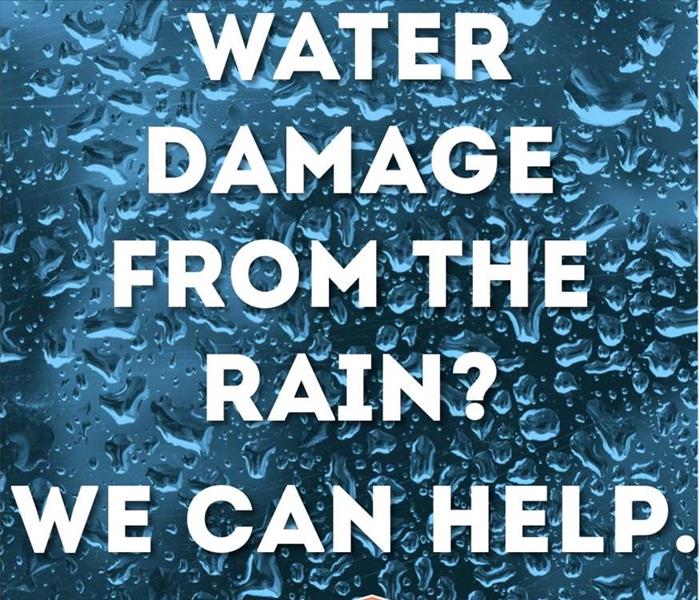 water damage from rain
water damage from rain
Make Sure You Are Checking All The Areas of Concern Following a Storm!
Severe weather can lead to significant property damage, and unless your facility has an excellent exterior maintenance schedule, you may wind up with many unexpected expenses. People often have a false sense of security about their buildings, which can result in the absence of concern after a storm. As any storm restoration and remediation company in Washington County, TN, may explain, inspections after any storm are vital to the protection of your building and budget. If you are not familiar with inspecting your facility after a storm, then try and focus on the four following areas.
- Walls
A significant aspect of keeping a building maintained is ensuring its structural integrity. While you may not see any apparent storm damage while walking your property, look closely at the walls, especially toward the foundation and roofline. If you notice any cracking, splits, or separation, then you may have a foundation problem. Sometimes rainwater settles near the footing of a building, causing soil displacement, which shifts the foundation of the building, resulting in damaged property. - Windows
When performing exterior maintenance and inspections, be sure to examine the windows around the property. Windows often have a shorter lifespan than the rest of the materials used in your property. While the pane may be intact, the frame or the sealant used for installation can fail over time, leading to water damage in the property. - Cladding or Siding
While cladding is useful for the protection of the exterior of your facility, it can damage easily. High winds can peel the material away from the building. Hailstones can puncture the material. Look for displaced seems and holes as you walk the property. - Roof
A thorough building inspection should include the roof. Many commercial roofs are flat and prone to water damage. Look for damaged sheeting and failing seals as you would with windows.
Especially during this time of year, when severe weather is typical, it is crucial to focus on exterior maintenance. If you need more suggestions for inspection points, then contact a local professional.
Call SERVPRO of Washington County at 423-434-0046 if you find yourself with any kind of storm damage! We are here to help 24 hours a day 7 days a week 365 days a year!
How To Design a Commercial Roof Maintenance Program
11/16/2020 (Permalink)
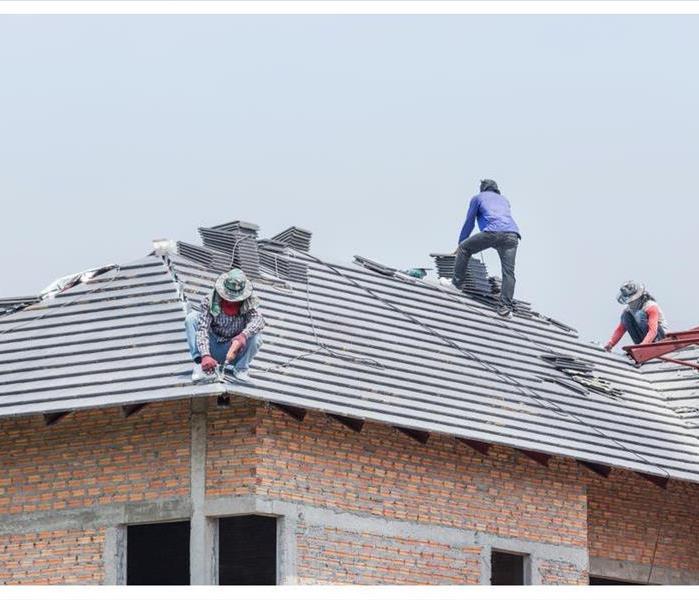 Implementing a roof maintenance program for your commercial building in Johnson City, TN, is an excellent idea
Implementing a roof maintenance program for your commercial building in Johnson City, TN, is an excellent idea
Implementing a roof maintenance program for your commercial building in Johnson City, TN, is an excellent idea. It will help extend your roof's life and reduce the risk of a roof leak. Planning a maintenance program will also provide guidance for addressing potential issues.
What To Include in Your Roof Maintenance Plan
Develop a comprehensive plan that includes the following considerations:
1. Routine Staff Inspections
Routine inspections by your maintenance staff provide defense against wind damage and other weather-related issues. You may find that quarterly or semi-annual inspections are sufficient in keeping up with potential problems, but don't forget to plan an inspection before the harshest weather arrives. Inspect the roof right after a storm as well.
Planning routine inspections will help you catch problems before they create a roof leak or other damage to your building. If you discover a leak, call a water damage repair service as soon as possible.
2. Periodic Upkeep and Repair
Completing routine upkeep is important. Make sure to clear the drains and gutters of debris periodically. Trim the trees near the building as well to keep contaminants and branches away from the roof.
Repairs should also be part of your preventive maintenance program. Fixing issues with the flashings, repairing the attic insulation and correcting field membrane defects are small things to fix but can prevent minor problems from becoming major issues.
3. Budgeting Considerations
Set aside money in the budget for routine inspections, upkeep and repairs so that you're able to address issues as they come up during the year. Without planning for these issues, you may find yourself without the necessary funds to fix the problem.
If the budget allows, contact a professional to inspect the roof each year to look for hidden problems.
Even though you can't eliminate a potential roof leak or other damage to your building, routine maintenance can mitigate the impact of these issues.
The Challenges Associated With a Home Sewer Backup
10/23/2020 (Permalink)
 Sewage backup is contaminated with biological viruses and bacteria
Sewage backup is contaminated with biological viruses and bacteria
The Challenges Associated With a Home Sewer Backup
Any leak in your home in Austin Springs, TN, is a cause for concern, but a sewer backup is another matter entirely. It is probably not a cleanup that homeowners should attempt on their own. This type of cleanup should be handled by a professional storm mitigation team. A number of complicated challenges require experience and professional equipment. Here are a few things that should be addressed by the cleanup crew as soon as possible:
- Turn off electrical power
- Remove people from the affected area
- Turn off running water
- Remove sewage and contaminated materials
- Protect uncontaminated areas
This is just the beginning. One thing, you can do at this time is contact your insurance company to begin the process of filing a claim.
Special Equipment
The cleanup of a sewer backup requires training and specialized equipment. A professional team of technicians knows that contaminated water from a source such as a bathtub backup should never be touched and that it poses a health danger to humans and pets. Therefore, technicians will used personalized protective equipment such as gloves, face masks and eye protection to safeguard their health. They will also use the latest in wet vacuums and industrial fans to remove the dirty water. They will also use disinfectants that clean contaminated surfaces to the highest industry standards.
Advanced Techniques
If your home has been impacted by flooding, a trained team will know a number of advanced techniques to make sure your home is restored to its original condition. In some cases, they will be able to restore damaged items with advanced cleaning methods, and other times they will recommend items by replaced. They also have the capability to tear out and replace sections of wall and insulation. A sewer backup restoration tests the knowledge of even the most experienced teams, but you can feel confident that a quality franchise will do the job right.
4 Tips to Prepare Your Business for a Disaster
9/8/2020 (Permalink)
Four Steps To Prepare Your Company For Any Type Of Catastrophe
Whether dealing with storm damage, fire damage or flood cleanup, a well-crafted disaster preparedness plan can help your business recover after an unexpected event. Here are four important steps you can take to prepare your company for any type of catastrophe.
1. Create an Emergency Plan
Training and forethought is key when it comes to protecting your employees in the event of a sudden disaster. Depending on the type of emergency, you will have to determine whether it is safest to stay inside or evacuate. If evacuation is necessary, all employees should be made aware of escape routes and recognize their roles in the evacuation procedure. For example, you may want to designate someone to shut down critical operations before exiting. Once everyone is outside, they should regroup at a designated meeting place. Pay special attention to devising a safety strategy for workers with disabilities who might need extra assistance.
2. Develop a Crisis Communication Strategy
Create a disaster preparedness plan for communicating with employees, stakeholders and local authorities. This often involves things like detailing the type of emergency assistance needed, plans for re-opening or returning to work and determining whether products and services will be provided as usual.
3. Carry Insurance
A good business preparedness plan should include hazard insurance for unexpected events including fires, flood damage and other natural disasters. Another option is catastrophe insurance that protects your company in the event of any extremely-costly natural or man-made event. Finally, you might also want to purchase business interruption insurance to keep your business afloat during the restoration period. Business interruption insurance may cover lost revenue, normal operating expenses and costs associated with temporary relocation.
4. Understand the Recovery Process
Compile a list of reputable restoration specialists in Bowmantown, TN. Professionals will use advanced tools and specialized techniques to assist with storm cleanup, water damage, mold remediation and even fire repairs. Beginning the cleanup process immediately after disaster strikes can get your business back on the right foot as fast as possible.
If your organization does not already have a disaster preparedness plan, start developing one today. It is one of the best things business owners can do to ensure the safety of their employees and their company.
How To Mitigate Flood Damage To Your Business
9/5/2020 (Permalink)
 Every business owner should create a supply kit for employees in case of an emergency
Every business owner should create a supply kit for employees in case of an emergency
Steps To Prepare Your Business For Flood Damage
Heavy storms may cause flooding in your Embreeville, TN, building. Water can easily get inside your property and harm your valuable assets. That is why you should take steps to prepare your business for flood damage.
Gather Supplies
Every business owner should create a supply kit for employees in case of an emergency. This way, workers will be prepared for a potential evacuation. Your kit should include the following:
- Batteries
- Water
- Food
- Whistle
- Cell phone
- Garbage bags
- Flashlight
Protect Your Belongings
Floods typically bring contaminated black water into a building. To keep your valuables dry and bacteria-free, store them in higher locations. Any key documents should also be put inside a waterproof container. You may also want to anchor key utilities, such as heating systems and electrical panels.
Stay Informed
You and your employees should understand whether your property is at an increased risk for flooding. FEMA provides a map that shows the chances of a flood developing in your area.
You also need to know when a major storm is coming. This will give you a chance to secure assets and evacuate the premises, if necessary. The National Oceanic and Atmospheric Administration and the Emergency Alert System should inform you if heavy rains are on the horizon. Your community may have its own warning system, as well.
Buy Insurance
Finally, before the big flood arrives, make sure your insurance policy is up to date. While your commercial property policy likely does not cover flooding, you should be able to purchase flood coverage through the National Flood Insurance Program. Keep in mind that the policy usually takes one month to go into effect.
With proper preparation, you can limit the damage that floodwaters cause to your property. Still, even if you follow mitigation procedures, your business may still be affected by a storm. If that happens to your company, try contacting flood cleanup and restoration professionals in the area.
Preparation Tips for Storm Safety
8/1/2020 (Permalink)
 An emergency supply kit helps ensure that you have everything you need
An emergency supply kit helps ensure that you have everything you need
Tips To Help Protect Your Home
Hurricanes and other tropical storms are not entirely avoidable, but the right preparation can minimize the damage the damage they cause. Follow these tips to help protect your home in Jonesborough, TN, from storm and flood water damage.
1. Know your risk: Certain regions have a higher risk for flooding and storms. Hurricane season also varies depending on which region you reside in.
2. Monitor warning signs: Some signs are more obvious than others. An actual flash flood or storm warning is a good indicator of impending danger, but these warnings aren't always reliable. Sometimes all it takes it a bit of heavy rain to cause water damage.
3. Practice evacuation routes regularly: Chances are, your community does have outlined evacuation routes. If not, then create your own and practice them regularly so you don't forget them.
4. Gather emergency supplies: An emergency supply kit helps ensure that you have everything you need in one place in the event of a disaster. Some important items to add to your kit include drinking water, non-perishable food, a flashlight, a first aid kit, batteries, a wrench or set of pliers and an emergency cell phone.
5. Protect your home: Protecting the house itself is equally as important as saving the possessions inside the flooded building. Move valuables to higher levels of your home to protect them from rising flood water. You should also ensure that drains and pipes are clear. This will help drain the water faster. It's also a good idea to purchase flood insurance in the event of water damage.
6. Listen to the authorities: If your local authorities tell you to evacuate, then you need to leave with your emergency supply kit. Do not attempt to return to your home until they inform you that it is safe to do so.
Personal safety is far more important than protecting personal property. Remediation experts can always help you drain flood water and fix water damage after the fact. All you have to worry about is keeping yourself and your family members safe.
The Water Damage Restoration Process
5/5/2020 (Permalink)
 Drying out the remaining water in a Bowmantown, TN home
Drying out the remaining water in a Bowmantown, TN home
Water Damage Restoration Process
After residential flooding, mold growth can begin within 24 hours, so it is important to begin cleanup as soon as possible. The following steps outline the water damage restoration process:
1. Document damage and contact the insurance company. After you have made sure all people and pets are safe, the first thing you should do is contact your insurance company. They may have specific instructions about what you should do next. They will likely ask you to document the damage. Take detailed photo or video evidence before beginning the restoration process.
2. Remove standing water. To remove the standing water, you will likely need to use specialized pumps or vacuums. You can also use buckets to scoop out the water.
3. Dry out the remaining water. After the standing water has been extracted, there will still be moisture within porous items. You can use fans and dehumidifiers to help speed the drying process. If the humidity outside is low enough, you can open windows and doors to increase airflow. It is important to fully dry your property to prevent mold growth.
4. Clean and sanitize affected surfaces. Flood water often contains bacteria, so it is important to sanitize everything affected by the flooding. The source of the water you are dealing with will determine the type of cleaner you should use. Everything that cannot be fully cleaned and dried should be thrown out.
5. Repair or replace damaged items. After everything is clean and dry, you can begin restoring the property. Depending on your level of experience, you may be able to do some of the repairs yourself. For some items, particularly electronics and other delicate items, you may need to hire a professional restorer.
From dealing with the insurance company to preventing mold growth, there is a lot to deal with after residential flooding. If you need help with mold removal or other aspects of the restoration process, an experienced restoration company can help you get your Bowmantown, TN, home back to normal quickly and safely.
3 Tips for Conducting Fire Drills at Work
3/31/2020 (Permalink)
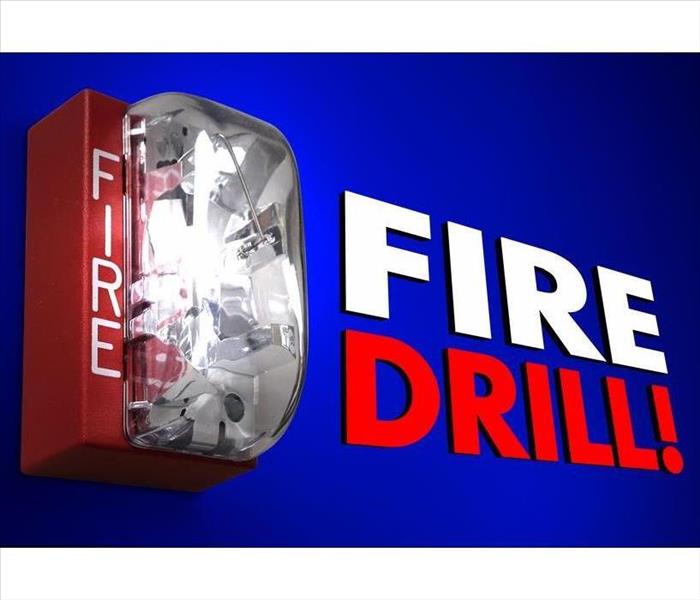 A fire drill is an efficient and effective way to prepare your people for the worst
A fire drill is an efficient and effective way to prepare your people for the worst
Three Tips To Help You Maximize Drill Effectiveness
In an emergency situation, a solid plan of action helps mitigate disaster and expedite restoration. A fire drill is an excellent way to ensure that employees are properly prepared for the worst and that essential resources are secured. As you're preparing for natural disasters that could happen in the Telford, TN, area and preemptively simplifying your storm cleanup measures, here are three tips to help you think ahead and maximize drill effectiveness.
1. Delineate Communication Strategies
Planning for an emergency can prompt a plethora of important questions:
- How will an emergency be reported?
- How will the alarm be sent?
- Which people are essential points of contact in various critical situations?
- Who is the best source of information if someone has questions about the fire drill or urgent procedures?
Lay out everything your people need to know, from internal phone numbers and names to essential contacts outside the company. Keep the information in easily accessible locations.
2. Clarify Evacuation Policy
Have escape routes clearly marked in those same accessible locations. How can you make it simpler for employees to get out in a dangerous situation? Who will be shutting down worksite operations that cannot be neglected? These are decisions to make in advance.
3. Delegate Vital Services
Who will be managing the fire extinguisher? What aid or medical services will be available to those outside? Be sure to designate who is responsible for getting any needed rescue kits out of the building.
Similarly, you should consider the cleanup ahead of time, too. While fire itself is obviously destructive, and smoke damage can impede your business operations, be careful not to overlook water damage. Between the water used by the fire department to put out the blaze and the shower from your property's sprinkler system, your workplace may need the help of an experienced water damage restoration company.
A fire drill is an efficient and effective way to prepare your people for the worst. With a plan in place, you can move forward with confidence and peace of mind.
Tips for Weathering a Flood
11/14/2019 (Permalink)
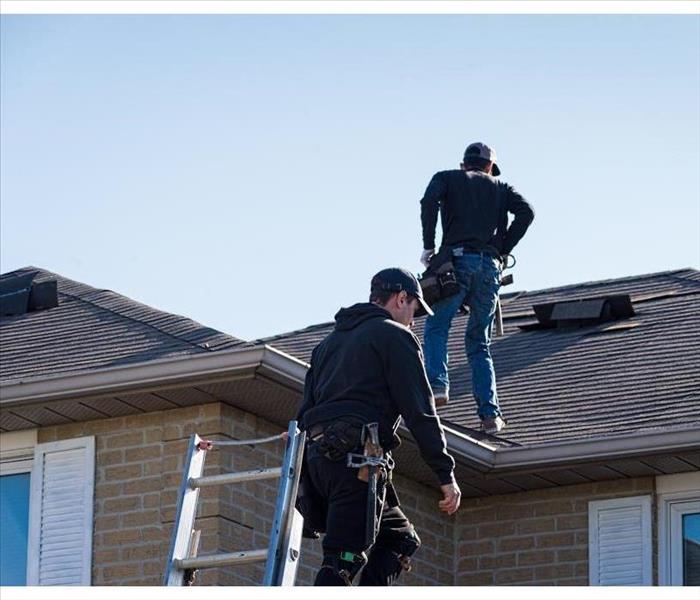 Inspect the conditions of your damaged roof
Inspect the conditions of your damaged roof
A flood is a powerful, overwhelming event that leaves many homeowners feeling defenseless. The truth is, though, there are many things you can do to increase flood safety for you and your family both before and after a flood strikes. There are also techniques that can be used to limit the amount of property damage that a home suffers. One important fact to keep in mind is that you are not alone. A long list of supporting agencies and companies can be of assistance before, during and after a storm strikes. These include government agencies, emergency personnel, insurance agents and storm remediation professionals in Bowmantown, TN.
Safety Tips Before the Storm
Preparation before a storm can make a big difference for your flood safety. The following steps can be helpful:
- Go over safety procedures with your family every six months or so
- Discuss things to do, things to avoid and safe places to go during a flood
- Post a list of emergency numbers
- Inspect the condition of your roof, storm drains and gutters
It's worth having a contractor come over to inspect the structural elements of your home. A professional may spot things that escaped your notice.
Safety Tips After the Storm
A home after a flood has many perils, some which are not commonly known. Electrical equipment should be considered hazardous until it is inspected by an electrician. Flood water can contain a host of nasty items and should be considered contaminated and off-limits. If you have personal protective equipment, such as gloves or a quality face mask, use them to limit your exposure. All affected materials including carpeting, furniture, walls and clothes should be considered suspect. If the damage is significant, make sure to consult with professionals who are experienced in storm cleanup. Not only will they be able to cleanup your home efficiently, they may also offer flood safety advice that will benefit you and your family.
4 Options for Working During a Power Outage
10/26/2019 (Permalink)
 Power outage in Jonesborough, TN area
Power outage in Jonesborough, TN area
4 Options for Working During a Power Outage
If there is a power outage in your building during a storm in Jonesborough, TN, you could just call it a day and send everyone home. However, this is likely not ideal as you can lose valuable time and profits. Instead, consider one of the following alternatives.
1. Use a Generator
If you want to continue working for a bit after the power goes out, a portable generator can be a great solution. It can give you enough time to finish up important tasks and shut down your computers safely to avoid damaging them or losing any of your data. However, these are generally only designed to be used for a few hours at a time.
2. Move to Another Location
If you need internet access to continue your work, then you might consider moving to a public space like a library or a coffee shop for part of the day. Many of these offer free wi-fi, so it can be a convenient solution for a short period.
3. Work From Home
Another option is to simply have everyone work from home. If your employees have internet access at home or have work to do that does not require them to be online, then this can be a good time to complete some individual work.
4. Do Tasks That Don’t Require Electricity
While a power outage can be a big inconvenience, it doesn’t have to be the end of your work day. If there are things that need to be done that you don’t need electricity for, then take this time to work on those instead. You can leave other tasks for when the power comes back on.
Along with a power outage, storms can cause a variety of other issues, including damage to your building. If this happens, you can contact a professional cleanup and restoration service. They can remove any water damage, perform repairs and salvage affected belongings.
What to Do Without Flood Insurance
9/11/2019 (Permalink)
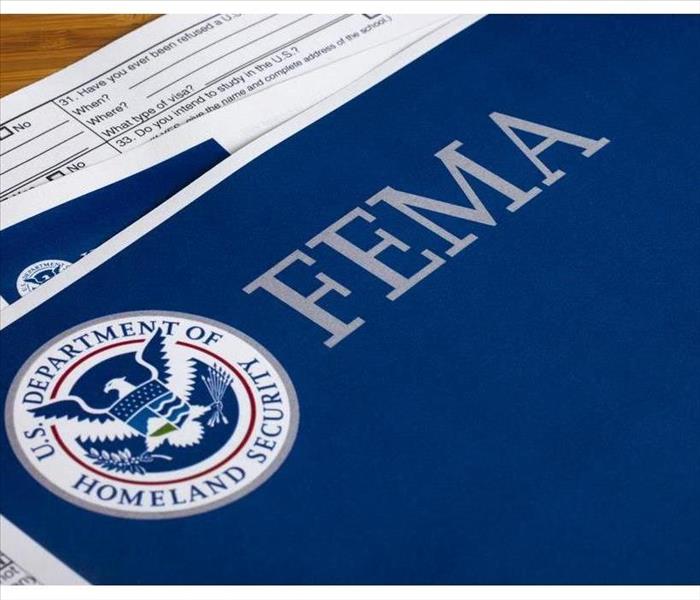 FEMA provides funding for areas which they label as being involved in a federal disaster
FEMA provides funding for areas which they label as being involved in a federal disaster
Flooding may be a rare problem for many homeowners in Embreeville, TN, but in that rare instance, it is always nice to have flood insurance. However, this is an extra expense and not everyone does it. So, if you are one of those who did not opt for this type of insurance, and you have been involved in a severe flood, you might have another option.
FEMA Grants
The Federal Emergency Management Agency provides funding for areas which they label as being involved in a federal disaster. Many hurricane disaster areas obtain this type of aid, but areas which have severe seasonal flooding or are located in a flood plane are often also able to collect help to repair their homes. Even if you have flood insurance, you can acquire aid.
The grants include funds to pay for just about any living need, to ensure you and your family are taken care of in these extreme circumstances. These funds are available without regard to income.
Temporary housing
Emergency home repairs
Uninsured/under-insured personal property losses
Medical and dental expenses related to the disaster
Funeral expenses related to the disaster
You Are Covered
Even without flood insurance, in certain extreme circumstances you may be covered. Where many other homes are affected by seasonal flooding or natural disasters or storms, and FEMA considers your county as part of a federal disaster area, the funds could cover your needed repairs. DisasterAssistance.gov will let you know if your hometown is part of the selected disaster area. You can also apply for your grant or any needed assistance using this website, and an inspector will call you to setup a time when they can come survey the damages. This will happen within days of your registration.
If you have already made repairs to your property, you could be reimbursed for the repair and cleanup expenses. It is beneficial to have photos of the damage before repairs are made to speed up your application process. Using FEMA funding, you can utilize the expertise of a professional flood remediation company to ensure your home is put back to being safe, sanitary, and structurally sound.
Choosing Storm Shutters for Your Home
7/9/2019 (Permalink)
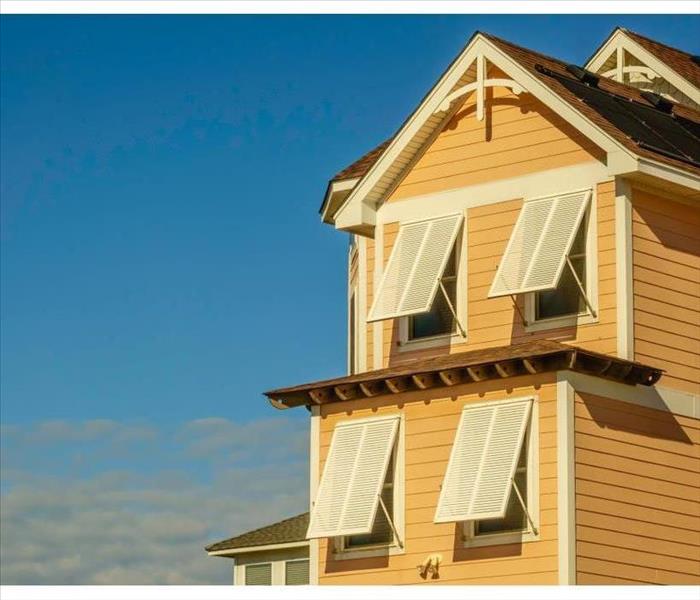 Choose to protect your home with storm shutters
Choose to protect your home with storm shutters
Things to Consider When Choosing Storm Shutters for Your Home
If your home experiences high winds in Austin Springs, TN, then storm shutters may be something you're looking at. These can be important tools for protecting your home during inclement weather, and choosing the right storm shutter may depend on your home's individual needs. Here are a few things to consider when picking out the right fit for your residence.
1. Know your Local Weather
The type of style of the storm shutters you prefer for your home may be dependent on your local weather patterns. When doing so it's important to know what to expect in your area, and what type of recommendations have been suggested for your local region. Different styles may work better for certain weather patterns,
2. Choose a Style
There are several styles of shutters available, from those designed for high winds, to units created for heavy rain. Th accordion shutter style folds out away from the home and over the window, while roll-down units install above the window and pull down to cover the glass. Others act as awnings in good weather and can be swung down to close before a storm.
3. Select a Material
The next step is to select the material you wish your shutters to be constructed out of. Certain materials may be dependent on style, but in most cases wood or metal are the most common. It is also important to note that even if with shutters some storm damage can still occur, and in such cases a water damage restoration service may be able to help.
In an area that experiences high winds you may choose to protect your home with storm shutters. Selecting the right shutter for your home may include knowing your local weather patterns, choosing the style that works best with those patterns, and the material that stands up to the weather in your area. Remember, if you have any questions a professional may be able to help.
The Top 5 Flood Prevention Strategies
5/3/2019 (Permalink)
 Rain gardens can slow the rate of drainage in your commercial property in Austin Springs, TN
Rain gardens can slow the rate of drainage in your commercial property in Austin Springs, TN
Five Flood Prevention Strategies
There are a number of ways for municipalities and commercial property owners to reduce the risk of flooding. Find out more about five flood prevention strategies that are already in use in flood zones and may be useful for managing flood water in Austin Springs, TN.
1. Barriers
A variety of barrier designs are used to stop flooding caused by rising surface water levels. Self-closing or manual barrier installations and dams can be ideal for inland waterways. Levees and tide gates are useful for coastlines with estuaries or sloughs.
2. Diversions
Water can be diverted on a large scale with manmade canals or floodways, temporary holding ponds or destinations in existing bodies of water. Depending on the design, diversion routes may run through basins on the surface or underground.
3. Groundwater Replenishment
One of the most effective flood prevention strategies for communities or property owners also involves controlling the flow of groundwater. Rain gardens can slow the rate of drainage. Floodplain restoration is also helpful for recharging groundwater and reducing flooding.
4. Grading
Adjusting the grading of landscaping is another effective way for commercial properties to control the flow of flood water. In general, water should flow away from the foundation of a structure and toward drainage.
5. Building Design
A structure with a properly designed building envelope and a well-maintained roof is less likely to flood or sustain water-related storm damage. If damage does occur, an owner or manager should rely on the specialized flood cleaning expertise and equipment of mitigation and restoration professionals.
Building barriers and large-scale diversions such as canals or floodways will usually require municipal or other public authorization and funding in Austin Springs, TN. Property owners and managers can pursue on-site flood prevention by adding groundwater replenishment features, adjusting the grading of a property and designing or retrofitting a structure to keep out moisture and flood water.
First Responders, Floods and Immunizations
4/25/2019 (Permalink)
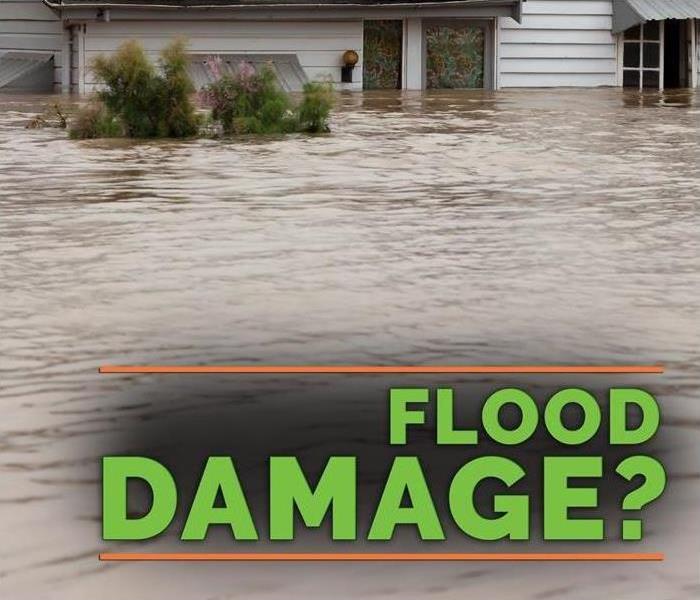 There are specific immunizations that are crucial to have when you are going to be exposed to flood waters and possibly ill people.
There are specific immunizations that are crucial to have when you are going to be exposed to flood waters and possibly ill people.
Are you a first responder? If so, it is likely that you will be involved in an emergency flood situation in Johnson City, TN at some point in the future, if you have not been already. There are specific immunizations that are crucial to have when you are going to be exposed to flood waters and possibly ill people - keep reading to learn which ones you need, and which ones you do not need.
Vaccines That Are Not Required
The following vaccines are generally not required for first responders working within the continental United States:
- Rabies
- Cholera
- Hepatitis A
- Typhoid
- Meningococcal
There are different requirements for those working outside of the U.S., but you should be well enough protected in the U.S. as long as you have received the following two vaccines.
Hepatitis B
Any first responder who could be in contact with bodily fluids or caring for sick or injured people as part of a flood response team should receive a Hepatitis B vaccine. If you are certain that you are highly unlikely to come into contact with individuals or bodily fluids, this is not a requisite immunization, but it is still a good idea to arm yourself against Hepatitis B.
Tetanus
First responders who have not had a tetanus vaccine within the past ten years need to have boosters, according to CDC guidelines. Every adult should receive at least one booster during their lifetime - regardless of their profession. Tetanus immunization proof is generally not a strict requirement for first responders, though it is preferred by many employers. Either a tetanus/diphtheria or a tetanus/diphtheria/pertussis vaccine is typically sufficient.
Other Considerations
Remember that there are other situations that could arise that require different vaccinations, such as working with a storm damage restoration team or being in contact with animals. Always talk with your employer and your physician before making any final decisions about what immunizations you should get as a first responder.
Steps on How to Get Storm Restoration
2/19/2019 (Permalink)
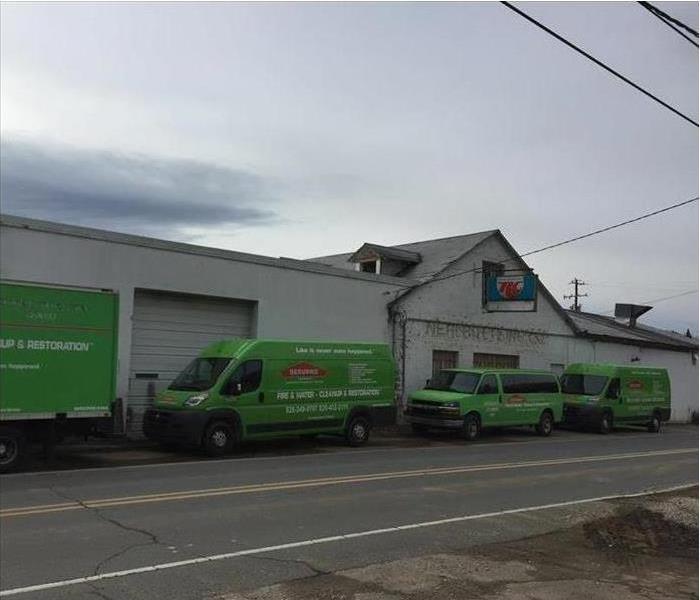 Call in professionals who understand the demands of storm remediation
Call in professionals who understand the demands of storm remediation
Storm restoration is a top priority for a storm and is helped when there is storm remediation. Homeowners might deal with hail damage, ice damage, wind damage, hurricane damage, and even river flooding throughout the year. There might be a need for roof repairs and water restoration, which is why it's important to know the different steps.
Focus on Cleanup
If there is flood water or other groundwater, water restoration needs to be a top priority for storm remediation. If the river flooding is causing problems, that needs to get under control first. Otherwise, the flood water could result in more groundwater as well as ice dams, frozen pipes, and more depending on the time of year.
It's best to call in professionals who understand the demands of storm remediation. They can focus on using a flood pump in the flood water as well as identifying all of the issues. Whether there is roof damage that has led to a roof repair, ice damming because of frozen pipes or other things, the restoration professionals will get everything under control.
Remove Damaged Items
Flooding is going to cause damage to a lot of different things. Homeowners need to focus on home restoration, which means identifying what has been damaged. There will be fewer damages when there has been storm remediation.
There might be shingles down, damaged drywall, wet carpeting, roof leaks, and more. If a flood pump is brought in early enough, the groundwater can be removed. If the flood pump isn't brought in time, however, it could result in mold and mildew. It's why water restoration has to be a top priority when there has been flooding.
Create a Home Restoration Plan
Every homeowner needs a home restoration plan to know that their home will be restored after experiencing hurricane damage, wind damage, ice damage, hail damage, roof damage, and anything else that might have happened. Ice damming, frozen pipes, and more are hard to deal with on one's own. It's why the plan should be created and followed through by a professional company that understands how to deal with river flooding, storm restoration, and more.
Professionals will bring flood pumps to deal with flooding and groundwater. They will know how to make roof repairs and fix roof leaks. they will also know how to complete water restoration regardless of whether it is flood water, or the problem is ice damage, complete with ice damming and frozen pipes.
Homeowners shouldn't try to do the roof repairs on their own. Instead, the storm restoration company will add the roof damage and other damage to the list of what to work on and create a good plan.
How Mold Can Infest Your Home After a Flood
2/19/2019 (Permalink)
 Standing water in your home can cause mold growth
Standing water in your home can cause mold growth
As if flooding wasn’t enough of a problem for homeowners in Bowmantown, TN people who have had standing water in their homes must also worry about mold growth and bacteria. Even after the water is gone, it can cause issues in the house.
Whether it came from a burst pipe, a storm, or some other problem, water can cause mold to spread throughout your home. This mold can cause
- Structural issues with your home
- A foul odor throughout the home
If you want to avoid this situation, it’s essential to act fast. Make sure to work with a professional restoration company to get your home in working order. Here are a few things you need to know about mold:
You Have Little Time
Mold is quicker than you may think. In fact, mold growth can become a problem in as few as 24 hours after a flood. At the most, you have 48 hours before it begins to wreak havoc. That’s why it’s so important to call a restoration business as soon as possible.
Many cleanup crews operate 24/7, so you can get help immediately. Don’t delay; the more time mold has to grow, the worse the problem can get.
It's Important To Clean Your Belongings
As you may know, mold can affect any floor or walls that sat with standing water. However, it can also affect your belongings. Be sure to thoroughly clean anything that was in the room with the mold.
For nonporous belongings, a bleach solution may do the trick. However, if you find a mold problem on a couch or other porous surface, you may need to throw the whole thing away. This is especially true if you had black water in your home, as it contains harmful bacteria.
If your home has been exposed to standing water, you are at risk for mold growth. Don’t take a chance. Call a professional restoration company in Bowmantown, TN immediately.
Visit http://www.SERVPROwashingtoncountytn.com for more information on storm damage.
3 Important Flood Prevention Techniques for Protecting Cities
2/12/2019 (Permalink)
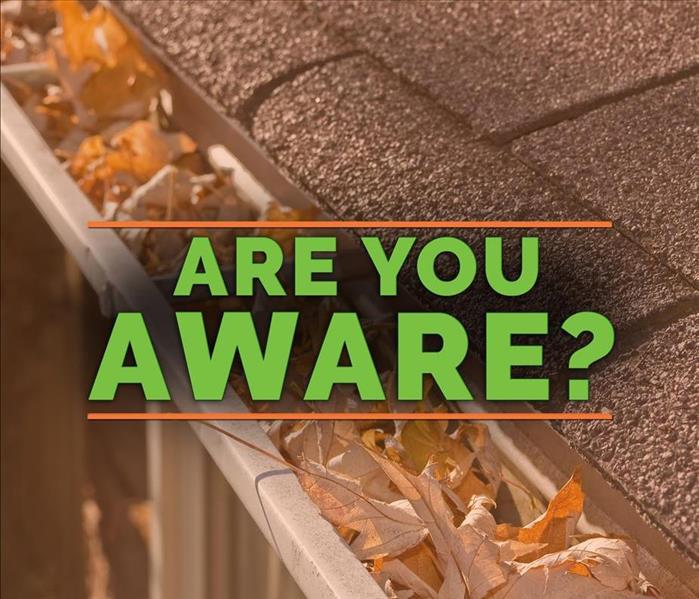 Keep your gutters clean.
Keep your gutters clean.
Flood Prevention
Sandbags and other similar alternatives are useful for reducing the damage caused by floodwaters, but there are several flood prevention methods that can be used to help protect the city of Austin Springs, TN. Although storm damage restoration companies are very effective at reversing the damage flooding causes, the costs of these flood cleaning services are often too much for business owners to bear. By prioritizing prevention and implementing the following three techniques, cities can make the recovery process easier on all their citizens.
1. Vegetation
One easy method that cities and its residents can put into action to help prevent flooding is using vegetation as a means to stop erosion and stop floodwater in its tracks. Grass, trees, and shrubs help absorb water in the area and limit water run-off. Trees can also catch rainfall and help it evaporate before ever reaching the ground.
2. Drainage Systems
Poor drainage systems are a major cause of flooding. Typically, this is caused by improperly cleaned drains that collect plastic litter and result in a clog. Residents can participate in flood prevention by reducing their use of plastic, keeping trash off the streets, and bagging yard waste. It is also important that cities regularly clean their drainage systems and educate the public on what happens when their garbage ends up in the drain instead of the trash.
3. Coastal Defense Walls
For towns located near the ocean, tidal waves can easily cause flooding and damage homes near the shores. Many cities around the world have invested in building sea defense walls as a way to prevent waves from pushing too high up the shore and causing extensive damage. They also help limit the erosion waves can cause.
Investing in flood prevention is essential for cities that consistently receive heavy rainfall or are located near large bodies of water. It is important to remember that residents can have just as much as an effect as city officials in protecting their homes and businesses from floodwaters.
How to Take Care of Your Pump
9/14/2018 (Permalink)
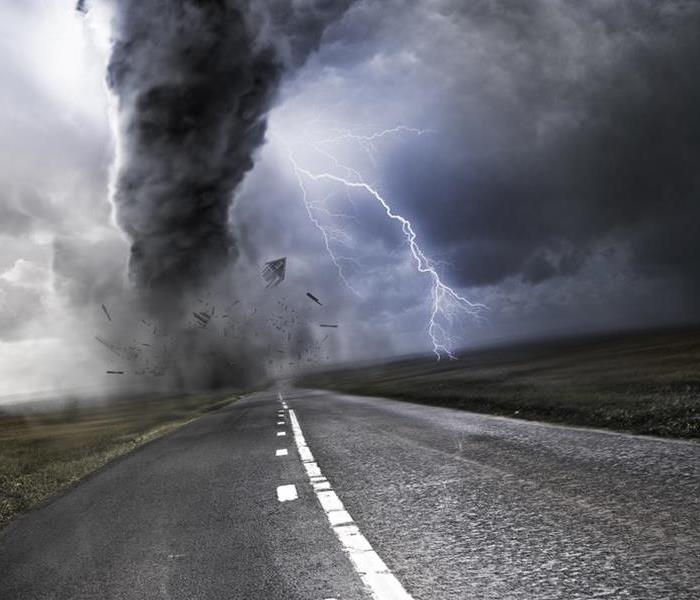 A basement can shield you from a storm by giving you an enclosed space away from large windows.
A basement can shield you from a storm by giving you an enclosed space away from large windows.
A basement can shield you from a storm by giving you an enclosed space away from large windows. The basement in your home in Johnson City, TN, needs protection from the storm itself, though. A working sump pump helps remove water from your basement when it floods, which can lower the cost of water damage repair services. To keep your pump working so it can extract water from your home, you must commit to regular pump maintenance. Here are some tips for taking care of your pump.
1. Clean the intake screen regularly. About once every quarter, your intake screen needs to be cleaned. Remove any gunk or debris so that it doesn't get clogged.
2. Clear debris out of pipe and pit. If the pump has had to extract water from the basement, it may have gravel or other debris in the pit near the floater or in the discharge pipe. By clearing these areas, you ensure that floodwater has an open passage to the area where you want it distributed.
3. Test your sump pump monthly. Testing is merely a matter of creating the situation the pump is designed to combat. Fill a bucket with water and pour it into the basin to see if the float mechanism activates the pump like it should.
4. Confirm that the unit has power. The cord to the power supply should be checked periodically for defects and replaced if anything looks suspicious. Make sure the pump is plugged in.
5. Maintain backup power supply. It is a good idea to have a backup power supply for your pump. If it is backed up by a battery, make sure you replace the battery at least every two years, even if you haven't had to use it.
Your basement may be prone to flooding, but a sump pump can help move some of the water our and give you peace of mind. Take care of your pump, and it will take care of your home. For more information, visit http://www.SERVPROwashingtoncountytn.com/.
Adding Storm Shutters to a Home
7/20/2018 (Permalink)
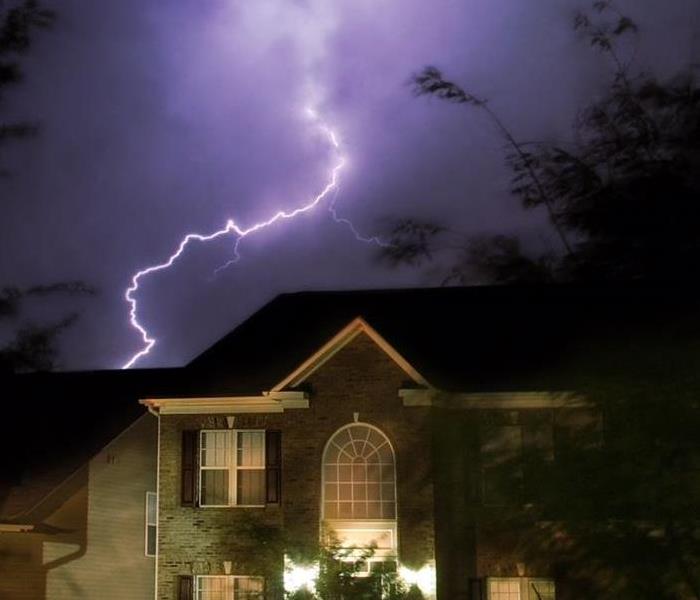 Storm shutters can protect you and the interior of your home from flying glass and debris in the midst of a storm.
Storm shutters can protect you and the interior of your home from flying glass and debris in the midst of a storm.
When nature is at its most wrathful in Johnson City, TN, high winds are often responsible for property damage. Installing window protection can be a prudent investment to protect your home and its contents. Learning about the window types available is the first step toward making an appropriate purchase for your needs.
Know Your Options
Shutters designed to be a temporary application when gales are predicted are the least expensive and least aesthetically-pleasing option. Permanent ones can be costly but add design interest and practical functions. Shutter styles include:
• Temporary: These are made of steel, aluminum, or polycarbonate and are held in place by channels bolted onto the house above and below windows. Channels are removable, and the cost is usually less than $20 per window.
• Accordion: These are permanent, manually operated, and stored in boxes alongside windows when they are not in use. Made of polycarbonate or metal, they usually cost between $15 and $25 per square foot.
• Rolling: These are also permanent and have the added benefit of offering insulation and increased privacy as well as protection from high winds. Made of polycarbonate or high-quality steel, they can be manually or automatically activated. Prices range from $20-$30 per square foot.
• Bahama: These offer shade and privacy as well as storm protection. They range from $15 to $20 per square foot.
• Colonial style: These are both permanent and decorative. Depending on window size, the shutters can be tri-fold or bi-fold. They are bolted into place when needed and range in price from $200 to $500 per window, depending on size and material.
Storm shutters can protect you and the interior of your home from flying glass and debris in the midst of a storm. However, in the event that high winds damage your home, professionals can help with interior and exterior damage and cleanup once the storm has passed. For more information, visit http://www.SERVPROwashingtoncountytn.com/.
Removing Odors After Water Damage
6/12/2018 (Permalink)
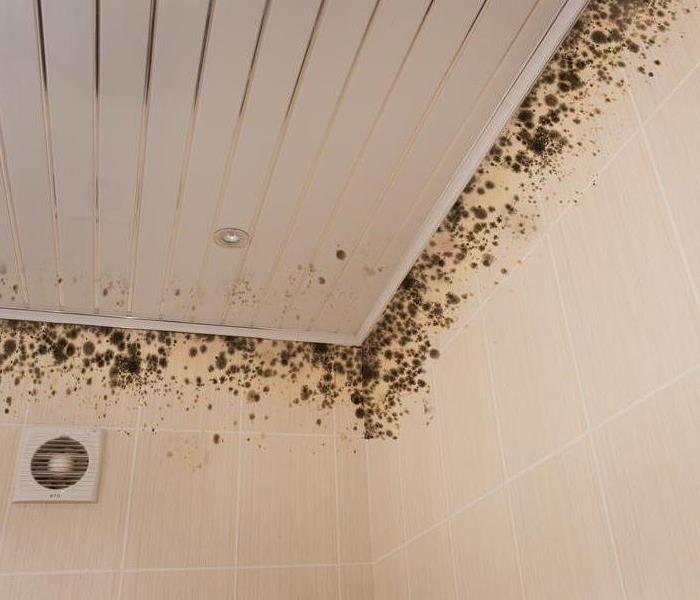 There is no need to live with the offensive odor of mildew and mold growth.
There is no need to live with the offensive odor of mildew and mold growth.
Water damage to your building in Johnson City, TN, can be caused by leaky pipes, torrential rains, or floodwaters. The damage may also be limited to one room or to an entire floor as the water seeps into walls or stands 18 inches deep. No matter how much water damages the structure, the problem the receding water leaves behind usually still includes mold growth and its horrible odor.
Offensive Odor
The offensive smell that lingers after the flood is probably due to one or more of the following situations:
• Mold colonies
• Mildew growth
• Bacteria development
The problem usually needs to be addressed to eliminate the smell.
Injured Items
Although cleaning one room with moldy items by tossing them out may eliminate the smell and possible contamination in the general area, it may not be enough to contain mold and its odor. Mold remediation experts suggest throwing out anything that shows any sign of mildew or mold growth, especially those objects that have been standing in flood water for longer than 24 hours. Additionally, items effected by sewage loss should be discarded.
Dangerous Dampness
Mold thrives in dark, damp places. Behind wet walls, under moist flooring, and below soggy floorboards can be perfect breeding grounds for thriving mold colonies. To remove the mold and its offensive odor the water problems such as trickles, tiny leaks, and damp spots need to be removed in the affected area.
Constant Cleaning
As the mold is washed from damaged surfaces, the chance of spores dispersing to other areas is often great. That is why there can be constant cleaning to remove offensive odors after water damage. The key is generally disinfecting, deodorizing, and air flow on a regular basis. Dehumidifiers can also be used if air flow is a problem because of weather conditions.
Successful Elimination
There is no need to live with the offensive odor of mildew and mold growth. Removing wet items, drying out damp areas, and cleaning contaminated surfaces can help eliminate the smell. With regular inspections of previously infected areas, the problem can often be kept under control. For more information, visit http://www.SERVPROwashingtoncountytn.com/.
Protecting a Damaged Roof Before Repairs
4/13/2018 (Permalink)
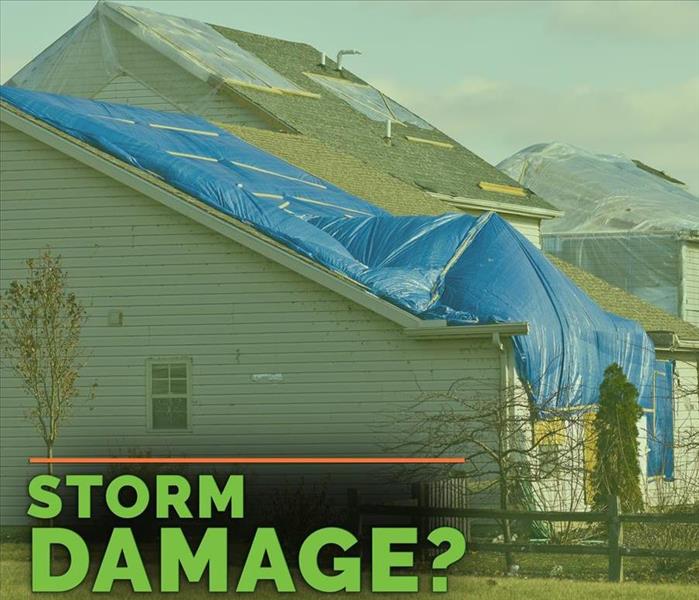
Powerful storms often cause multiple cases of roof damage in Johnson City, TN. Because so many homeowners in your area may be affected by the same issue, it can be hard to get a storm damage repair team to your home in a timely manner. If you have to wait a bit to start the real repairs on your roof, you may want to take some steps to protect your home. Protection can help do the following:
• Decrease chances of flooding
• Stop more materials from getting ripped off
• Stop material tears from getting bigger
Now that you know protecting a damaged roof is important, you may want to learn what you can do to guard your system from further damage.
Boards
Your roof repair team can use boards to temporarily fix certain aspects of a roofing system. For example, if the wind damage caused a tree branch to fall onto a roof, you may want to use a combination of boards to secure the damaged tree to ensure more branches do not fall onto your house.
Tarps
Making your home watertight is an important part of roof repairs. However, roof damage often opens your house up to water damage even if there is the smallest of sprinkles. You can use a tarp to cover any holes or missing shingles on your system. If necessary, you may want to use a couple of boards to help keep the tarps securely in their place.
Claims
Your insurance coverage may help you make repairs to your house. Before you start doing anything too big, you may want to call your provider to learn more about your policy. You may need to take photos, call an adjuster or work with a repair team familiar with the insurance claims process.
Roof damage can be a major concern for you. This disrepair can leave the rest of your home vulnerable. If you cannot get a permanent repair started right away, you may want to protect the damaged system from further harm. For more information, visit http://www.SERVPROwashingtoncountytn.com.
Disaster Prepardeness in Johnson City, TN
2/19/2018 (Permalink)
You probably don't think sit around thinking about how devastating a fire or flood could be, but a few minutes of preparation can save you and your family's lives and protect your property.
Disaster preparation takes just a little time, but it can save your life. At a minimum, you should know: - where to find information on emergency situations, - where to go for help, - how to evacuate. You should also have on hand an emergency supply kit to meet basic needs for at least three days.
Information Sources Disaster preparation begins before an event threatens. Johnson City TN experienced significant flood events in 2008, 2012 and 2013, according to The Johnson City Press and City-Data.com. These floods damaged area businesses and homes. Some were flash flood events which gave residents little time to evacuate. You can stay on top of potential flood events by using a NOAA weather radio to monitor the forecast. It automatically alerts you with a warning signal and the issued watch or warning.
For more information entailing disaster restoration services and prevention, please visit www.SERVPROwashingtoncountytn.com
Emergency Communication in Johnson City, TN
2/19/2018 (Permalink)
Check the Johnson City Emergency Management Agency website for up-to-date information on hazardous events in the area. Emergency management officials update the website with information on emergency shelters, evacuation routes, and the event as it unfolds.
While you're able, follow the event on the television news or radio broadcasts within Washington County TN. Social media, although popular, may not be the top priority for emergency management officials. It does provide a good source of personal experiences and may provide up to date information on road conditions and closures.
Help When It's Needed
Among the things you need to do quickly when faced with a fire or flood are find a shelter, locate disaster aid, and communicate with loved ones. The American Red Cross provides these services 24 hours a day, accessible via their Get Help web page.
For more information entailing disaster restoration services and prevention, please visit www.SERVPROwashingtoncountytn.com
Evacuation in Johnson City, TN
2/19/2018 (Permalink)
Evacuation Procedurs
The Johnson City, TN EMA website provides standard evacuation routes to use in case of emergencies, such as flood. Practice using the evacuation routes from your home and your work. If you have school-aged children, practice the evacuation route from their school to a safe place, for instance, the recommended areas of higher ground in a flood event. Do this even if your children normally ride the school bus. In emergency situations, the school may suspend bus services. Know the safest routes between your home and work, and your children's school. Also, develop an emergency contact plan with a contact who lives outside of Washington County TN that each family member will call when they begin their evacuation and when they reach safety. This lets all family members know the others are safe even if they become separated.
For more information entailing disaster restoration services and prevention, please visit www.SERVPROwashingtoncountytn.com
Emergency Kit Preparation
2/19/2018 (Permalink)
Emergency Kit Items
The American Red Cross and the Federal Emergency Management Agency advocate each household equipping itself with a basic emergency supply kit. Include the following in your kit:
- one gallon of water per person per day for a minimum of three days.
- a three-day supply of non-perishable (canned or dried) food, at a minimum.
- a hand cranked or battery-powered NOAA weather radio with tone alert.
- a flashlight,
- extra batteries for both,
- a first aid kit,
- a whistle,
- a dust mask,
- plastic sheeting and duct tape to shelter-in-place,
- baby wipes, garbage bags and plastic ties for personal sanitation,
- a wrench or pliers to turn off utilities,
- a manual can opener for food,
- maps of Johnson City TN and Washington County TN,
- a cell phone with chargers,
- an inverter or solar charger.
For more information entailing disaster restoration services and prevention, please visit www.SERVPROwashingtoncountytn.com

 24/7 Emergency Service
24/7 Emergency Service
















